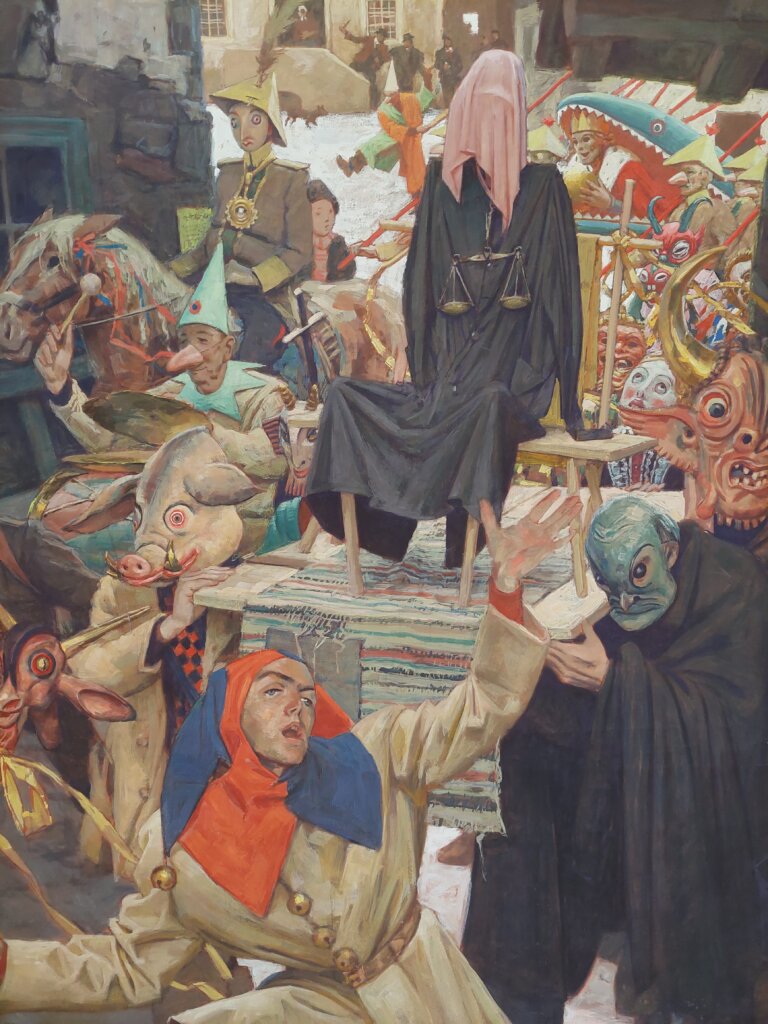
Wilhelm Dachauer
was born in 1881 and was the son of a Ried watchmaker. He initially had to undertake an apprenticeship to a decorative painter and room painter in Vienna before being accepted by the Vienna Academy in 1898. A bursary enabled him to travel to Italy and Egypt. In 1913, he exhibited at the Vienna Secession for the first time. After the collapse of the monarchy, he returned to Ried, where he painted highly symbolist works. His graphic works are influenced by art nouveau and folk art. In 1927, Dachauer was appointed to the Academy of Fine Arts in Vienna. After the annexation of Austria by the German Reich, his idealistic depictions of rural life fitted with the National Socialist glorification of agricultural workers. After the war he had to resign his teaching post in 1945, but he was reinstated one year later. He took portrait commissions and provided drafts for banknotes and stamps. His paintings “carnival of fools (Narrenzug), “the evil krampuses” (Die bösen Perchten) and “the erection of the cross” (Kreuzesaufrichtung) deal with the era of National Socialism and his affliction with cancer of the oesophagus.
Wilhelm Dachauer died in 1951.
